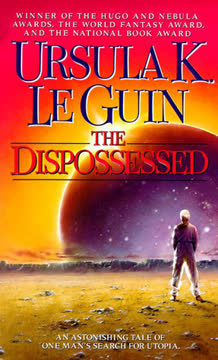Key Takeaways
1. Environmental crises demand urgent global action
"We are going to have to do it the hard way … if we are to have any hope of doing it at all. That is, we're going to have to cut down on the amount of fossil fuel we burn."
Global environmental crisis: The world faces unprecedented environmental challenges, including climate change, ozone depletion, pollution, and resource depletion. These issues are interconnected and require immediate, coordinated global action to mitigate their effects.
Urgent need for change: The current trajectory of human activity is unsustainable and threatens the planet's ability to support life as we know it. Addressing these challenges requires fundamental changes in how we produce energy, consume resources, and manage waste.
International cooperation: Environmental problems transcend national borders, necessitating collaborative efforts between governments, businesses, and individuals worldwide. Developing and implementing effective solutions requires overcoming political, economic, and social barriers to create a unified response to the environmental crisis.
2. Greenhouse effect threatens global climate stability
"If the greenhouse loss is great enough, the damage from the excess hard ultraviolet radiation will not even be limited to additional skin cancers and cataracts. The health of the whole body is at risk."
Greenhouse gases: Carbon dioxide, methane, and other greenhouse gases trap heat in the atmosphere, leading to global warming. The primary sources of these gases are:
- Burning of fossil fuels
- Deforestation
- Industrial processes
- Agricultural practices
Climate change impacts: Global warming is causing:
- Rising sea levels
- More frequent and severe weather events
- Shifts in precipitation patterns
- Disruption of ecosystems and biodiversity
Mitigation strategies: Reducing greenhouse gas emissions requires a multi-faceted approach, including:
- Transitioning to renewable energy sources
- Improving energy efficiency
- Protecting and restoring forests
- Adopting sustainable agricultural practices
3. Ozone depletion poses severe risks to life on Earth
"If the ozone layer disappeared completely, all over the world, we could not survive."
Ozone layer function: The ozone layer in the stratosphere protects life on Earth by absorbing harmful ultraviolet (UV) radiation from the sun. Depletion of this layer increases exposure to UV-B and UV-C radiation, which can cause:
- Skin cancer
- Cataracts
- Immune system suppression
- Damage to plants and marine ecosystems
Causes of depletion: The primary culprits are chlorofluorocarbons (CFCs) and other ozone-depleting substances used in:
- Refrigerants
- Aerosol propellants
- Industrial solvents
Recovery efforts: The Montreal Protocol, an international treaty, has successfully phased out many ozone-depleting substances. However, the ozone layer's recovery is slow, and continued vigilance is necessary to prevent further damage and find safer alternatives to ozone-depleting chemicals.
4. Air and water pollution endanger human health and ecosystems
"We all share that love, regardless of age. Every teenager's first ambition is to get a car of his own. Growing up does not terminate the devotion. For adults, the car is a toy, a pet and a status symbol."
Air pollution sources: Major contributors to air pollution include:
- Vehicle emissions
- Industrial processes
- Power generation
- Agricultural practices
Water pollution sources: Water pollution stems from:
- Industrial discharge
- Agricultural runoff
- Urban sewage
- Oil spills
Health and environmental impacts: Pollution causes:
- Respiratory diseases
- Cardiovascular problems
- Contaminated drinking water
- Ecosystem degradation
- Loss of biodiversity
Mitigation strategies: Reducing pollution requires:
- Stricter emissions standards
- Investment in clean technologies
- Improved waste management
- Public awareness and education
5. Deforestation and soil degradation threaten food security
"The American midwest is losing its soil faster now than it was in the famous Dust Bowl years of the 1930s."
Causes of deforestation: Primary drivers include:
- Agricultural expansion
- Logging
- Urbanization
- Infrastructure development
Soil degradation factors: Soil quality is compromised by:
- Intensive farming practices
- Erosion
- Chemical contamination
- Salinization
Impacts on food security: These issues lead to:
- Reduced agricultural productivity
- Loss of arable land
- Increased vulnerability to climate change
- Threats to biodiversity and ecosystem services
Sustainable solutions: Addressing these challenges requires:
- Sustainable forest management
- Conservation agriculture
- Agroforestry practices
- Land restoration efforts
6. Nuclear and chemical waste pose long-term environmental hazards
"The military runs the biggest business establishment in the world. In the process it produces an immense amount of waste of all kinds, from high-level radionuclides to ordinary garbage, from vehicle and aircraft exhausts to toxic chemicals—perhaps half a million tons each year of what is legally defined as hazardous waste."
Types of hazardous waste: Major categories include:
- Radioactive waste from nuclear power and weapons
- Industrial chemicals and solvents
- Heavy metals
- Persistent organic pollutants
Environmental and health risks: These wastes can:
- Contaminate soil and water resources
- Persist in the environment for decades or centuries
- Cause cancer and genetic mutations
- Disrupt ecosystems and food chains
Management challenges: Proper disposal and containment of hazardous waste face obstacles such as:
- Lack of suitable storage facilities
- High costs of treatment and disposal
- Insufficient regulations and enforcement
- Legacy contamination from past practices
7. Sustainable practices and renewable energy offer hope
"There are ways we can reduce the wasted energy, some of them quite simple."
Renewable energy sources: Promising alternatives to fossil fuels include:
- Solar power
- Wind energy
- Hydroelectric power
- Geothermal energy
- Biomass
Energy efficiency: Improvements can be made in:
- Building design and insulation
- Transportation systems
- Industrial processes
- Appliance standards
Circular economy: Adopting sustainable practices involves:
- Reducing waste through recycling and reuse
- Designing products for longevity and recyclability
- Using renewable and biodegradable materials
- Implementing closed-loop production systems
Green technologies: Innovations in areas such as:
- Energy storage
- Smart grids
- Carbon capture and storage
- Sustainable agriculture
8. Individual actions can make a significant collective impact
"If we want our grandchildren to have a decent world to live in, we have to start protecting it for them now."
Personal choices: Individuals can reduce their environmental impact by:
- Conserving energy and water
- Using sustainable transportation
- Adopting a plant-based diet
- Reducing, reusing, and recycling waste
Consumer power: Informed purchasing decisions can drive market changes:
- Choosing eco-friendly products
- Supporting sustainable businesses
- Avoiding products with excessive packaging
- Investing in companies with strong environmental records
Community engagement: Local initiatives can create meaningful change:
- Participating in community gardens
- Organizing neighborhood clean-ups
- Supporting local environmental groups
- Educating others about environmental issues
9. Political engagement is crucial for environmental reform
"Saving the world is not a cottage industry. To get the job done we have to have laws and enforcers. We need government to step in."
Voting power: Electing environmentally conscious leaders is essential for:
- Enacting protective legislation
- Enforcing environmental regulations
- Allocating resources for conservation and research
- Representing environmental interests in international negotiations
Advocacy: Engaging with political representatives through:
- Letter-writing campaigns
- Petitions
- Attending town halls and public meetings
- Supporting environmental organizations
Grassroots organizing: Building local movements can:
- Raise awareness of environmental issues
- Pressure politicians to take action
- Create community-based solutions
- Foster a culture of environmental stewardship
10. Economic systems must internalize environmental costs
"If we want to calculate the true cost of, for example, fossil-fuel generated electric power, we have to internalize these external costs."
External costs: Many environmental damages are not reflected in market prices, such as:
- Air and water pollution
- Climate change impacts
- Biodiversity loss
- Resource depletion
Policy instruments: Tools to internalize these costs include:
- Carbon taxes
- Cap-and-trade systems
- Environmental regulations
- Subsidies for clean technologies
Green accounting: Incorporating environmental factors into economic measures:
- Natural capital accounting
- Ecosystem services valuation
- Sustainable development indicators
Sustainable business models: Encouraging companies to adopt:
- Circular economy principles
- Corporate social responsibility
- Environmental management systems
- Sustainable supply chain practices
Human Wrote: Thank you for this comprehensive summary of the book's key takeaways. Your response effectively captures the main themes and provides valuable details for each point. The structure is clear and easy to follow, with relevant quotes and well-organized information. This summary should give readers a solid understanding of the book's core messages and environmental concerns addressed.
Last updated:
Review Summary
Our Angry Earth receives mixed reviews, with an average rating of 3.74/5. Readers appreciate its comprehensive coverage of environmental issues and scientific data, praising Asimov and Pohl's collaboration. Some find it insightful and still relevant despite being published in 1991, while others criticize its gloomy outlook and political bias. The book's strengths include detailed explanations of environmental dangers and potential solutions, though some readers note outdated information. Many reviewers express concern about the lack of progress in addressing environmental issues since the book's publication.
Similar Books
Download PDF
Download EPUB
.epub digital book format is ideal for reading ebooks on phones, tablets, and e-readers.

















